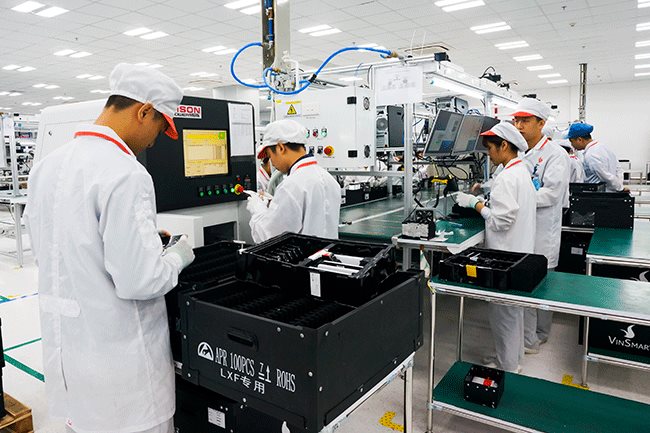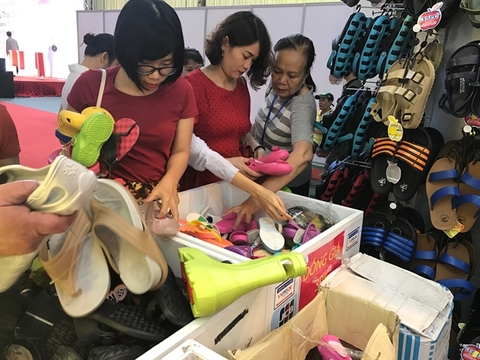Transformation of export regulations through EVFTA
Transformation of export regulations through EVFTA
What does the new EU-Vietnam Free Trade Agreement, signed in Hanoi on June 30, mean in the era of global trade disputes? Nestor Scherbey, president of Customs, Trade & Risk Management Services (Vietnam) Co. Ltd., spells out the process the country will have to adhere to when it comes to the export and labelling of goods across borders.
The EU-Vietnam Free Trade Agreement (EVFTA) is considered a high-quality trade agreement similar to the Comprehensive and Progressive Agreement for Trans-Pacific Partnership (CPTPP), bringing significant benefits for both Vietnam and the EU. It has been estimated that the deal will help boost Vietnam’s exports to the EU to nearly $42 billion. However, the agreement itself contains 17 chapters, two protocols, and several memoranda that make it quite difficult to navigate by those who do not specialise in international trade agreements.
Vietnamese exports currently enjoy preferential trade under the Generalised System of Preferences (GSP) for qualifying goods. However, when Vietnam reaches a higher level of economic development, these will no longer be available as Vietnam will exceed the GSP’s competitive need limitations, effectively graduating from the GSP programme. As a result, the trade preferences of the EVFTA and the CPTPP will become very important for Vietnam’s exports to remain competitive in global trade.
Taking a closer look at the EVFTA, the most important provisions for Vietnamese producers and exporters and their overseas buyers are found in the first section on reduction or elimination of customs duties. These are applicable to qualifying goods that meet the agreement’s provisions for originating goods, and there are a number of annexes that list these according to Harmonised System (HS) tariff classification codes and descriptions.
Depending upon the HS tariff classification of the goods involved, the reductions can take up to 16 years to reach zero. It is important to understand that the trade agreement affects only customs duties and does not change value-added tax (VAT) charged with imports in both Vietnam and in EU member states. The VAT is usually collected on the duty-paid value of imported goods. This means that if the duty is zero, the VAT is still collected on the customs value of the imported goods as shown on invoices and in customs declarations.
Originating goods can be a very complex topic. One should not assume that goods originate for purposes of a trade agreement simply because they are sorted or packaged in a country before export. There are now active customs investigations in progress and significant customs penalties are being levied with imported goods whose so-called origin has been falsely claimed upon export and import documents. This is particularly problematic for goods that are made in more than one country. In certain countries such as the United States, such cases can result in criminal liabilities to the importer and exporter. The origin of goods for customs purposes is usually the country where the goods were grown, harvested, or manufactured. Particularly with manufactured goods, there is a risk that for goods made in more than one country before being exported to the country of import, problems with origin can and do occur.
For example, American-originated logs are exported to China and there, they are sliced in a complex operation to be made into veneer that will be used in furniture manufacture. As a result, their origin has changed from the US to China. Next, the Chinese veneer sheets are exported to Vietnam where they are used to manufacture furniture. When this happens, it results in another origin when the veneer is used to make Vietnamese furniture or household articles.
When these finished goods are then exported to the US or another country, the products are declared Vietnamese in origin on the trade documents. In order to avoid problems with documenting exports of finished goods, it is necessary to consult with a trade specialist to ensure the accurate declaration of origin on such documents. Otherwise, the importer or buyer in the final country of destination may be subjected to customs penalties. This is equally important for various “Made in” labels that are mandatory in many countries.
What does one do in cases where it is less than clear as to the country of origin, either for preferential trade agreement or label-marking purposes? Prior to export, it is best to apply for an advance customs ruling concerning the goods. In the US, these are issued by US Customs National Import Specialists in New York, and in the EU it involves a binding tariff information decision.
Once obtained, copies of these are submitted by the broker or agent employed by the importer to customs authorities at the time of import and customs declaration of the imported goods. Usually, research of existing rulings issued for goods similar to those to be exported is advised, to understand what precedents will be applied in the country of import. This will allow the exporting producer to make the required or adjustments to their manufacturing process. We have experience in applying for, and obtaining, hundreds of advance customs rulings for various goods, and such applications should be made at least 60-90 days prior to export. Once the goods are shipped, it is too late to apply for an advance ruling.
















